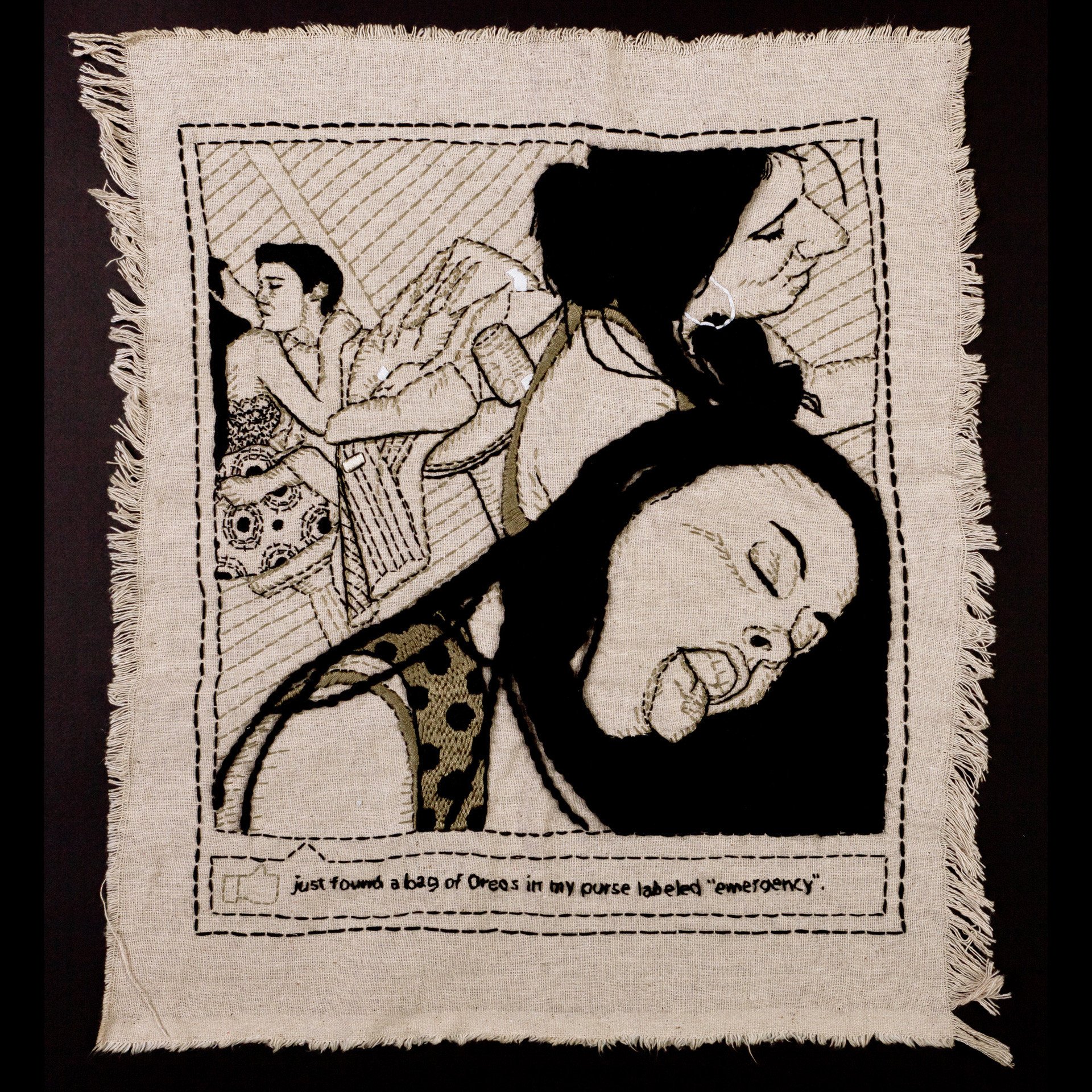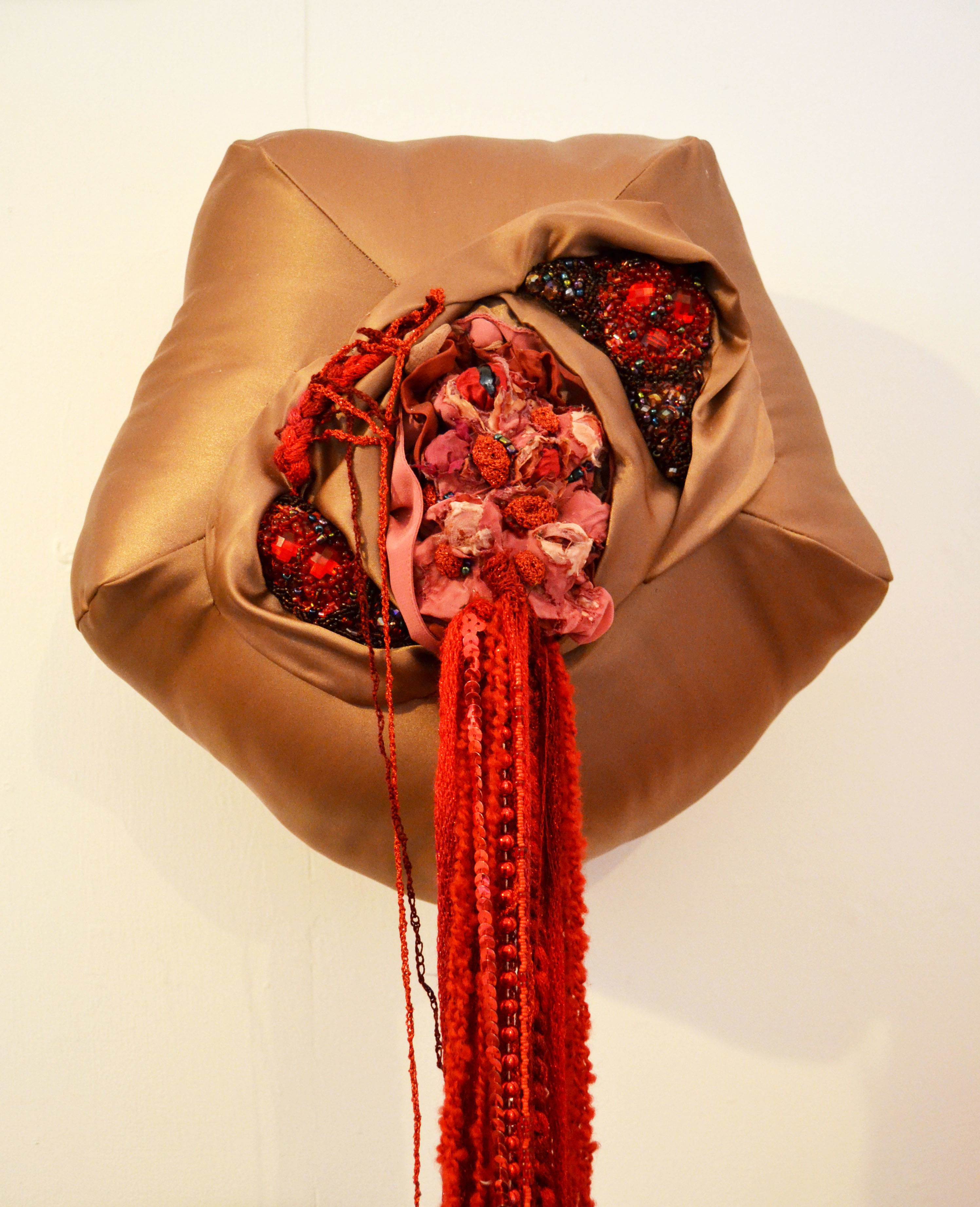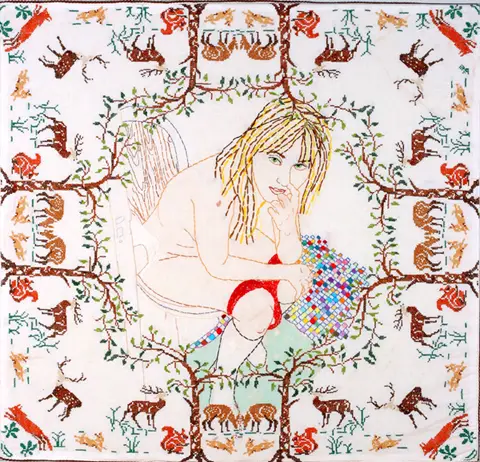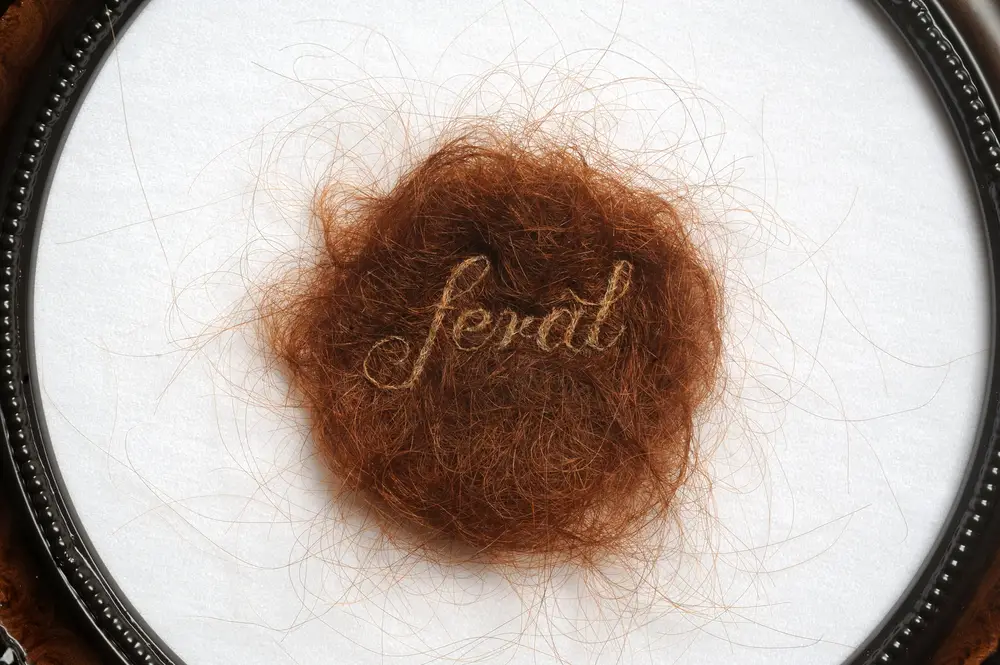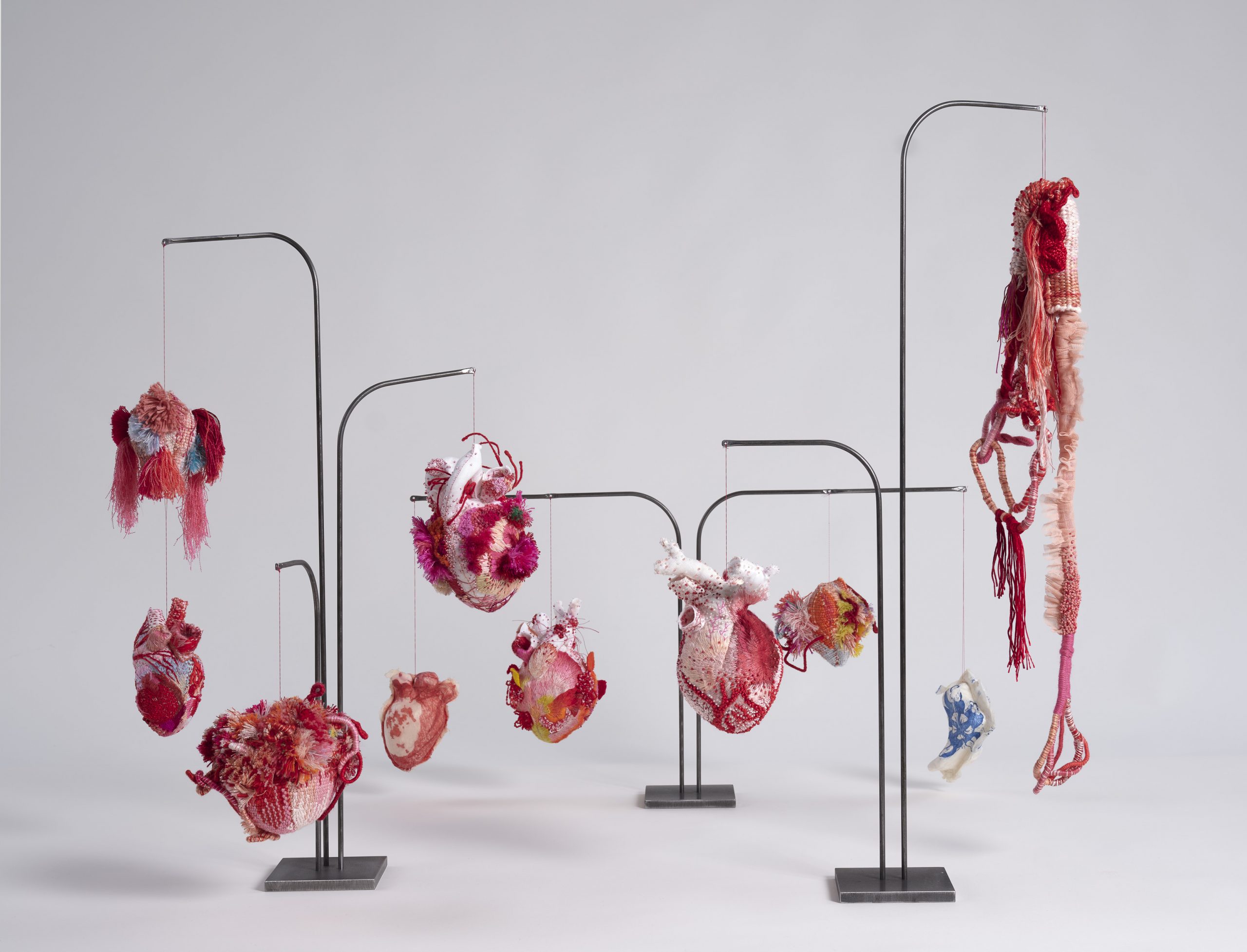Kathy Halper is a multi-disciplinary artist from Chicago, Illinois whose embroidered portraits explore private teenage moments shared on social media.
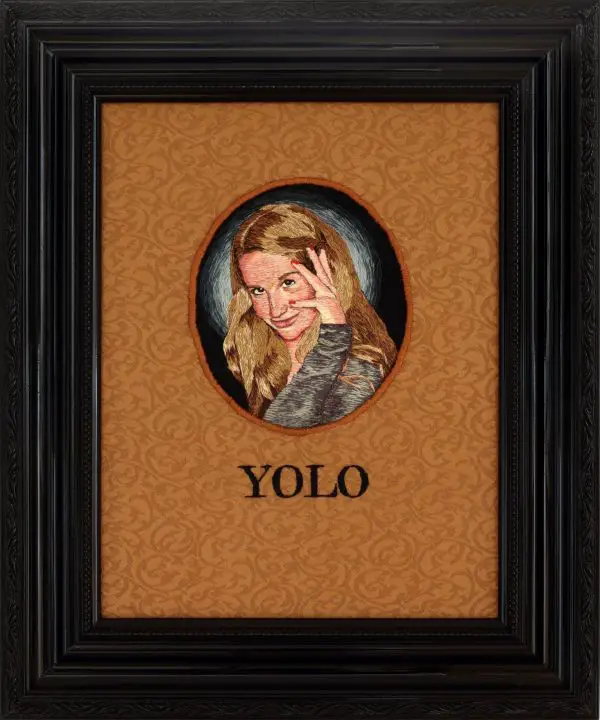
Kathy’s modern work encompasses a range of media, but here we focus on her embroideries from 2012 and 2013. Her Friend Me series of black and white machine stitched pieces focused on socially shared moments of misdemeanour:
“My series of embroidered drawings explore teenagers in their private world. The world now available to all online.
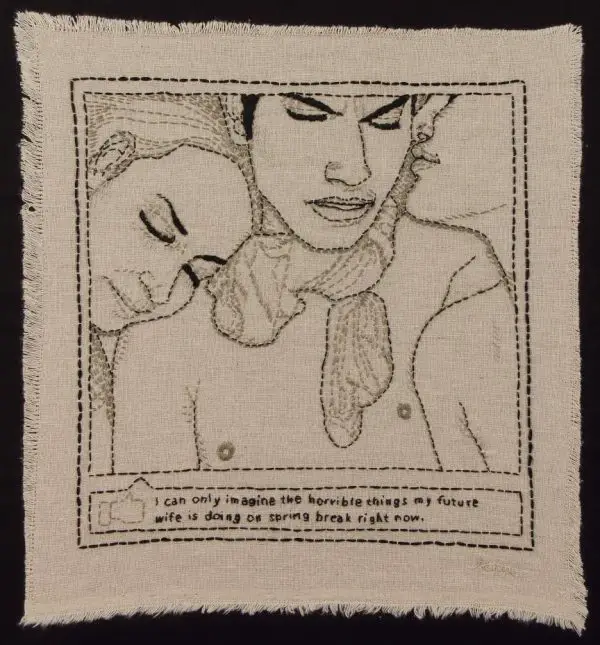
“The images in this series began as Facebook photos of teens engaged in typical yet sometimes disturbing explorations of sex, alcohol, drugs and celebration. I then randomly paired them with comments found on various networking sites. Originally I was painting these images but once I began embroidering, a passion from my own adolescence, I felt the parental hand of concern and caring much more present.
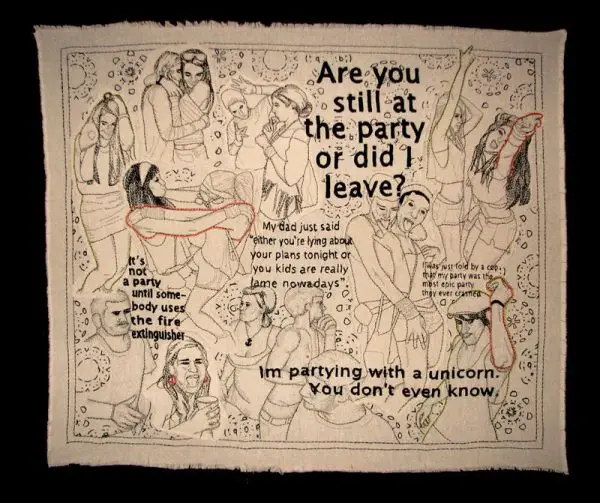
“I chose a more traditional structure to acknowledge needlework platitudes such as “Bless This House” from the past while incorporating the iconic “thumbs up” and comment box from today’s Facebook page.
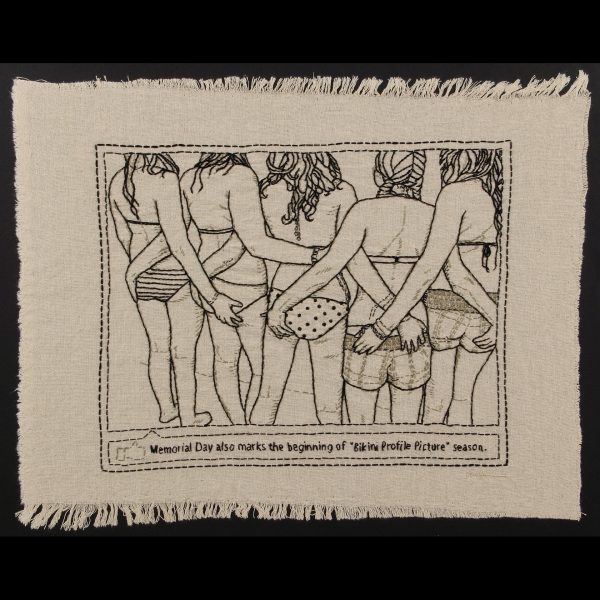
“It is this duality of the past and present, innocence and loss of innocence, privacy and the demise of privacy that fascinates me and drives me to continue exploring this subject.”
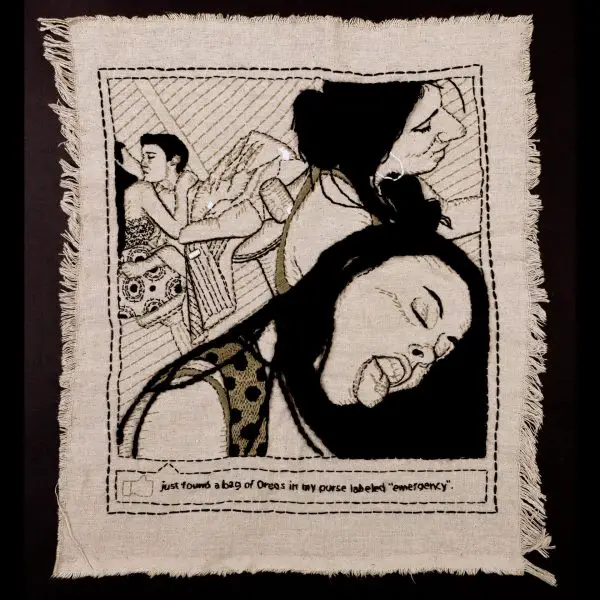
Kathy’s work documents a transitional time when social media began to take hold of the ways teenagers defined themselves. Her illustrative style of embroidery reminds me of Meagan Ileana and is perfect for this type of work. The combination of the images and the phrases create icons that reflect a zeitgeist of the moment that she stitched them.
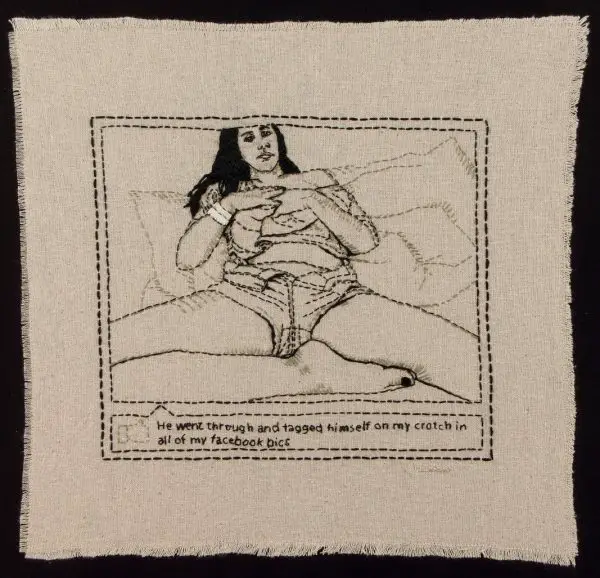
As we look back at this work from a decade later, there’s a certain nostalgia to them. It feels like the clumsiness of those days, where people would accidentally share images of misbehaviour, has been replaced by a more polarised situation. The platforms that Kathy focused on are still around, but the demographics have shifted and the teenagers of today don’t know a world without social media, whereas these images capture a time when this was a new idea and social proofing via online spaces was an emergent idea.
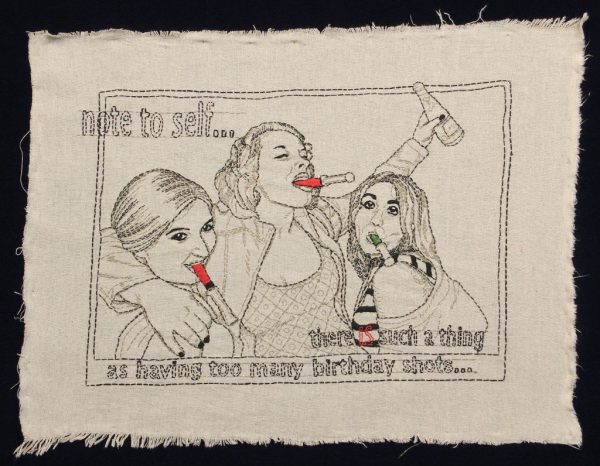
As we have seen with artists like Rachel Bernstein and Cecile Jarsaillon, embroidery can be used as a method of desensitising harsh images, and I think this is true of Kathy’s work; as shocking as the images might be, they are softened by the stitched medium which adds a layer of welcomed unreality.
The disconnect from the original photographic image, despite Kathy’s technical excellence with machine embroidery in this instance, makes the work more palatable, while at the same time afford us the opportunity to give the content more thought.
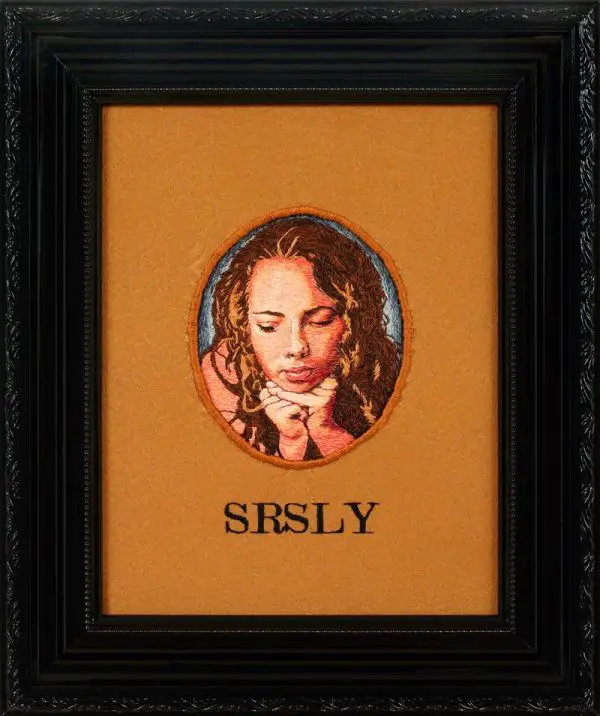
We can understand the impact of social media on the mental wellbeing of young people these days; it really is a double edged sword. Kathy’s work was somewhat prescient in its focus and I do wonder how the individuals immortalised in her embroideries might feel about these images now that there’s been a lot of water under the bridge.
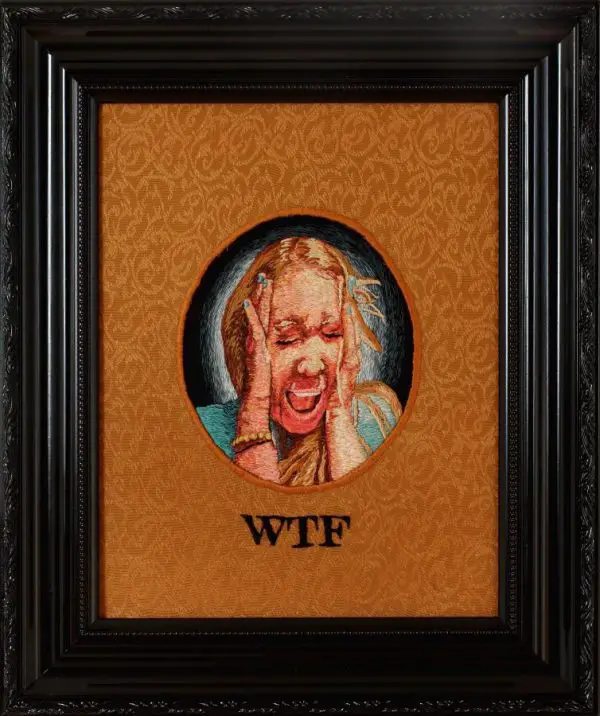
These trends will continue, and social discourse and exploration will be carried out online forever more. Kathy Halper was one of the first embroiderers to catch the wave and ride it before it became tidal.
To enjoy more of Kathy’s work, including her many other media creations – she really is a diverse talent – visit her website or follow her on Instagram.

